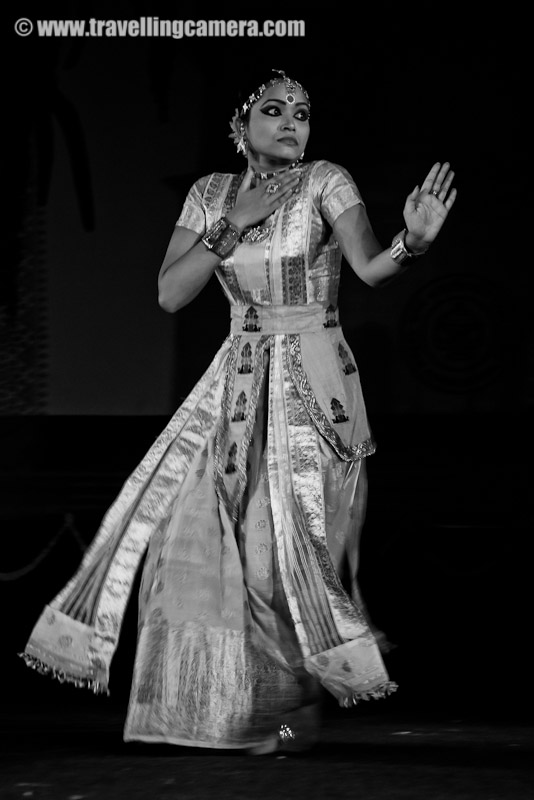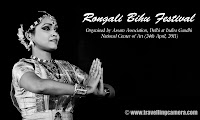Sattriya Dance Performance during Rongali Bihu Festival @ Indira Gandhi national Center of Arts (organized by Assam Association, Delhi on 24th April 2011)
Sattriya Dance performances is one of the main highlight of Rogali Bihu Festival at IGNCA, Delhi ! And this performance was full of expressions and it seems these songs were telling some story which dancer was enacting through her steps !!! Let's have a look at some of the photographs from Sattriya performance on 24th April, 2011 with relevant information about this particular form of Indian Classical Dance !!!
Sattriya Nritya is one among eight principal classical Indian dance traditions. Whereas some of the other traditions have been revived in the recent past, Sattriya has remained a living tradition since its creation by the Assamese Vaishnav saint Srimanta Sankardeva, in 15th century AssamSankardeva created Sattriya Nritya as an accompaniment to the Ankiya Naat (a form of Assamese one-act plays devised by him), which were usually performed in the sattras, as Assam's monasteries are called. As the tradition developed and grew within the sattras, the dance form came to be called Sattriya Nritya.
The name 'Sattriya' has been derived from the word 'Sattra' which are religious Institutes set up by the Vishnava Saint Shrimanta Shankardev for preserving and propagation of tradition, culture and religion. It was coined centuries after and represents all that the Saint had created, which brought about a Socio-cultural Renaissance in the Assam Valley of INDIA !!!
The Sattra style was evolved when Shankaradeva, a great artist and musician in himself composed 'Ankiya Bhaona' or 'Ankiya-Nat' (dance-dramas), devotional music- 'Borgeet', and the four sacred texts - “Kirtan', 'Dasam' 'Ghosa', 'Ratnavali' (the last two composed by Madhavdev). A School of Philosophical Learning emerged and a deeper understanding of life through the simple path of devotion brought one and all to the fold...
Actually Sattriya dance of Assam is a classical form of dance which is highly devotional in character with the spiritual aspect being predominant all through !!!
This Dance form of Sattriya is like many of the other Classical Dance forms of India which has been extracted from a larger body of theatrical practices that constitute the Ankiya Bhaona form. References of this dance form can be found in the ancient Indian classical texts like the Natyashastra, the Kalikapurana, the Yoginitantra, and the Abhinayadarpana apart from many sculptures, and historical relics.
The musical Instruments that accompany a performance are the khols or the drums, the taals or the cymbals, the flute and the violin. Even though Sattriya dance is performed by bhokots or the male monks traditionally in monasteries...
While I was searching through all relevant information about this particular form of Indian Classical dance, I found a link where I saw the same artist.. Please have a look and she really looks the same. Isn't it?
The Sattriya dance can be classified into two styles namely Paurashik Bhangi that is Tandav or masculine style and Shtri bhangi which is Lasya or feminine style !!!
This was one of the interesting performance of the evening at Rogali Bihu Festival although colorful lighting spoiled my lot of photographs... I will be sharing some colorful shots of Sattriya Dance soon !!!
Now I know another Indian Classical Dance form and loved the expressions of performer here !!!
You may Also like :-




















.jpg)